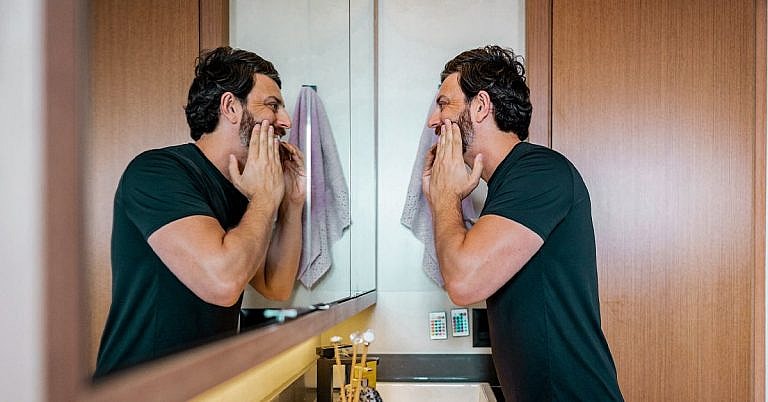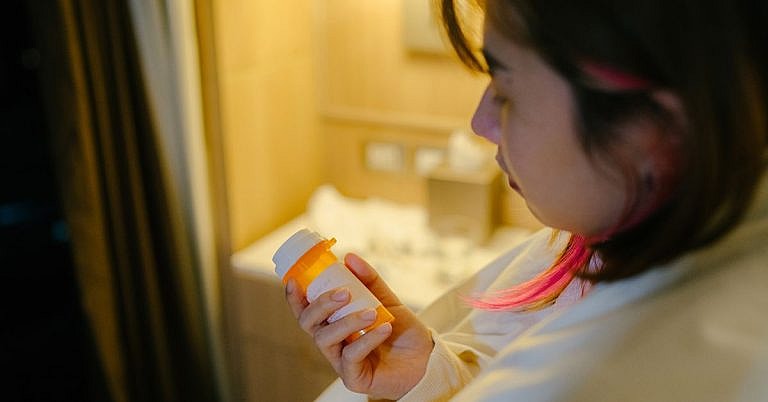Tips to Prevent and Avoid Diaper Rash
If you have a baby or toddler, chances are you’ve dealt with diaper rash. It’s usually not serious, but can be uncomfortable. Luckily, you can help prevent it with a few steps.
Diaper rash, also called diaper dermatitis, looks like inflamed, reddened skin around the diaper area. It can be caused by chafing, overgrowth of yeast or bacteria, or contact with irritants, such as urine and feces.
If you take care of a diaper rash with the right steps at home, it will usually heal in about 2 to 3 days.
We’ve partnered with A+D to bring you tips on how to prevent diaper rash, plus suggestions for relieving it if it does happen.
1. Change diapers frequently
Prolonged contact with a dirty diaper against the sensitive skin of baby’s bottom is the most common cause of diaper rash.
Check on your baby’s diaper frequently to see whether they need changing. You can even set a timer to help you remember.
When you go out with your baby, make sure to bring a diaper kit with several spare diapers, not just one, so you don’t get caught without one.
Experts recommend changing diapers once every 2 hours and right after your baby poops. This applies to babies who don’t have diaper rash. Changes should be more frequent if they have diaper rash.
Why it helps
Changing diapers frequently helps you whisk away urine and feces before they bother your baby’s sensitive skin.
Feces and urine are skin irritants. The longer they stay in contact with your baby’s skin, the more likely they are to lead to a rash and irritation.
Cloth vs. disposable for preventing diaper rash
There’s currently no evidence showing definitively which type of diaper is best at preventing diaper rash. Experts say that both cloth and disposable diapers come with the same risk.
When you’re choosing diapers, here are a few tips:
- Choose a brand without dyes or fragrances.
- Consider that cloth diapers tend to be less absorbent than disposable, so if you’re managing diaper rash, you may want to switch to disposable temporarily.
- If your child is between diaper sizes, size up rather than down. It’s better to use diapers that are a little loose rather than too tight.
If you use cloth diapers, make sure to follow the maker’s washing instructions and run them through an extra rinse cycle to rinse out any detergent. Presoak cloth diapers that are very soiled before cleaning further.
Don’t use fabric softener or dryer sheets when you’re laundering cloth diapers since these can contain fragrances that might irritate your baby’s skin.
2. Use a barrier cream or ointment
After you change your baby’s diaper and make sure their bottom is dry, you can apply a thick layer of barrier cream. Not all babies need this, but it can be especially helpful if your baby is having diarrhea.
Choose a product that’s fragrance-free to avoid potential irritants, and look for ingredients that can help, like zinc oxide and petrolatum.
The American Academy of Pediatrics reassures caregivers that there’s no such thing as too much cream. They recommend applying it thickly, “like icing on a cupcake.”
It’s OK to apply the barrier cream to sore, red skin. Just make sure you don’t rub it more than necessary since this may irritate the skin.
There’s no need to remove it each time you change your baby’s diaper unless it’s soiled. Just apply a new layer if needed.
A+D Original Ointment is pediatrician-recommended and formulated with lanolin, petrolatum, and vitamins A and D to relieve irritated skin.
It forms a thick barrier designed to help prevent diaper rash by sealing out wetness. It’s free of fragrances, parabens, dyes, and phthalates.
Why it helps
A barrier cream or ointment helps protect the skin from irritants and excess moisture.
3. Keep the area dry
This means changing dirty diapers right away, but it also applies to other sources of wetness. For example, consider changing your baby or toddler’s diaper if they’ve been playing in a wading pool with a diaper on or sweating in a hot car or stroller seat.
Also, consider patting your baby’s bottom dry with a clean, soft cloth each time you finish changing their diaper. Don’t rub the towel on the skin, as this can cause irritation.
Diaper-free time also helps. If you can, let your baby go without a diaper every so often on a towel or washable surface.
Why it helps
Moisture helps bacteria and yeast thrive next to the skin, so drying the area helps keep them from overgrowing.
4. Clean gently and well
Make sure you clean the diaper area well at each diaper change. If your baby is sensitive to baby wipes, try plain warm water and a soft washcloth instead. Experts say that it works just as well.
Make sure to be thorough, cleaning all the skin folds — like the labia and scrotum.
Keep in mind that rough washing can strip your baby’s skin and make it more prone to irritation, so gentle washing is key.
Why it helps
Gentle washing helps remove any debris and irritants from the skin that might cause or worsen diaper rash.
5. Soak baby’s bottom at diaper changes
Every few diaper changes, try sitting your baby in a shallow basin of warm water, gently scooping the water over your baby’s bottom.
Or you can simply give them a daily bath using just water. You may want to use a gentle, fragrance-free cleanser if the poop is very sticky.
After you’re all done, pat the area dry with a soft towel.
Why it helps
Soaking helps cleanse as soon as the skin is soiled — you don’t have to wait for a bath. Plus, a warm soak may help comfort the baby.
6. Keep diaper loose
The diaper should be loose enough for a little breathing space between the diaper and your baby’s bottom, but not so loose it falls off or leaks.
Allowing some breathing space in your baby’s diaper is especially important during the night, when any nighttime soiling may stay in the diaper for longer.
Why it helps
Keeping the diaper done up on the looser side can give your baby’s bottom a little more air, helping keep the skin dry and preventing any feces or urine from prolonged contact with the skin. It also helps prevent chafing.
What to do if your baby gets a diaper rash
If your baby gets a diaper rash, here are some steps to take:
- Change diaper once per hour: Experts recommend changing your baby’s diaper once an hour and at least once overnight.
- Change diaper right after soiling: It helps with prevention and it helps to heal diaper rash, too. Keeping feces and urine off the skin reduces how much diapers will irritate your baby’s bottom. Once you learn that the diaper is soiled, change it right away.
- Clean well with warm water: During diaper changes, make sure to thoroughly and gently clean with warm water and a soft cloth around the folds of your baby’s bottom and genitals.
- Avoid using baby wipes with soap and fragrance: They may sting when your baby has diaper rash. Instead, cleaning with a soft, wet washcloth works just as well.
- Give baby some diaper-free time: You can sit or lay them on a towel on the floor for a few minutes to let their bottom dry completely.
- Use a barrier cream or ointment on the rash: It can help protect the skin from further irritation. Do not share one diaper cream container between children. Make sure to use a new finger for a second application rather than putting your finger back into the container after using it on your baby’s bottom.
When to call a doctor
Seek medical help for a diaper rash if:
- it doesn’t clear up within around 3 days
- one or more open wounds or blisters have formed
- pus or fluid is coming from the rash area
- if your baby has a fever
Frequently Asked Questions: Tips to Prevent and Avoid Diaper Rash
What are the main causes of diaper rash?
Diaper rash is primarily caused by prolonged exposure to wet or dirty diapers, friction, sensitive skin, and sometimes by yeast or bacterial infections.
How often should I change my baby’s diaper to prevent diaper rash?
Change your baby’s diaper every 2-3 hours, or as soon as it becomes wet or soiled. Frequent changes help keep the skin dry and irritation-free.
Can using a specific type of diaper help prevent diaper rash?
Using highly absorbent disposable diapers can help reduce moisture against the skin, which may help in preventing diaper rash. Cloth diapers are also an option if changed frequently.
What kind of wipes should I use to clean my baby’s diaper area?
Use unscented, alcohol-free baby wipes or a soft cloth with warm water. These options are gentler on the skin and help prevent irritation.
Is applying diaper cream helpful in preventing diaper rash?
Yes, applying a barrier cream or ointment, like zinc oxide or petroleum jelly, during each diaper change can help protect the skin from moisture and prevent diaper rash.
How can I keep my baby’s skin dry to avoid diaper rash?
Allow your baby’s skin to air dry for a few minutes after cleaning and before putting on a new diaper. This helps reduce moisture and prevents rash development.
Are there any foods that can cause diaper rash in babies?
Some babies may react to certain foods, especially acidic foods like citrus fruits and tomatoes. Monitor any dietary changes closely and consult your pediatrician if rash appears.
When should I consult a doctor about my baby’s diaper rash?
If the rash persists for more than a few days, gets worse, or if you notice symptoms like fever or pus-filled blisters, consult your pediatrician immediately.
Bottom line
One of the best things you can do to prevent diaper rash is to keep your eyes (and nose) open for a soiled diaper. Then, change it right away. Don’t let your baby or toddler keep their dirty diaper on.
Diaper rash is common and usually not serious. That said, it can be uncomfortable for your baby.
But a few simple steps — like warm water soaks, proper drying, loose-fitting diapers, and a good barrier cream or ointment — can help prevent diaper rash and treat it when it happens.








Great tips! Keeping our little ones comfortable is so important, and your advice on frequent diaper changes and using a good barrier cream is spot on. I also found that letting my baby have some diaper-free time each day makes a huge difference in preventing rashes. Thanks for sharing!
This is such a helpful post! Diaper rash can be so uncomfortable for little ones and knowing how to prevent it is crucial. Your tips on changing diapers frequently and using a gentle barrier cream are spot on. Thanks for the valuable advice!
Thanks for sharing these valuable tips! It’s so helpful to have practical advice on preventing diaper rash. Keeping our little ones comfortable and rash-free is a top priority, and your suggestions are spot-on.
Thanks for sharing these valuable tips! As a parent, managing diaper rash can be really challenging. Your advice on regularly changing diapers and using a barrier cream is very helpful. I’ll definitely try to incorporate these practices into our routine. 😊
Thanks for sharing these useful tips! Keeping the diaper area clean and dry is definitely key. I also found that using a barrier cream with zinc oxide can make a big difference. Regular diaper-free time helps a lot too!